
Are Hair Transplant Consultation Free? What to Expect and Why They Matter
Yes, many hair transplant clinics offer free consultations. These consultations allow you to discuss your hair loss concerns, evaluate your

Below are some factors that can contribute to hair loss:
Schedule an initial consultation with a qualified and experienced hair transplant specialist.
Discuss your goals, expectations, and medical history during this consultation.
Norwood-Hamilton Scale
“Male Pattern Baldness” is a condition that can be classified into different grades based on the extent and location of hair loss. These grades help doctors determine the appropriate treatment plan for a patient.
These grades help individuals and hair transplant specialists to determine the most suitable treatment for each individual.

Minimal hair loss with a slightly receding hairline.

Mild hair loss with a more noticeable recession of the hairline.
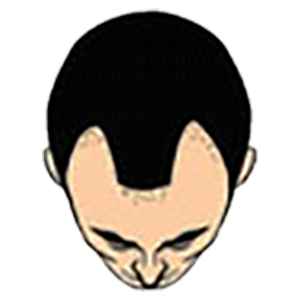
Further recession of the hairline and increased balding to the middle area of the top of the head.
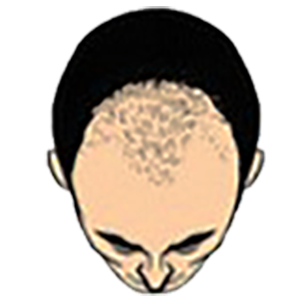
Significant hair loss with a distinct balding pattern extending to the crown.

Advanced hair loss, with thinning in crown.
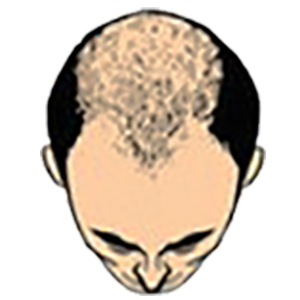
Severe hair loss, limited hair remaining on the sides and back.

Extensive hair loss, typically leaving only a horseshoe-shaped band of hair around the sides and back. Top, middle, and wide areas of the crown with hair loss.
Male pattern baldness is more common than female pattern baldness, affecting about 50% of men by the age of 50. In comparison, female pattern baldness occurs in about 30% of women over 50.
Baldness with Grades 2 and above requires a hair transplant, which is the best solution nowadays.
There are two types of hair transplant methods:
FUE is the newest and most advanced hair transplant technique that involves extracting individual hair follicles directly from the donor area and transplanting them to the recipient site.
FUT is an outdated technique that involves extracting a strip of hair-bearing scalp from the donor area and dissecting it into individual follicular units for transplantation.
The hair transplant procedure involves several key steps, including a consultation with a hair transplant specialist to evaluate the extent of hair loss, assess the quality of donor area hair, discuss expectations, and provide personalized recommendations.
2. Donor Site Selection
The donor site for a hair transplant is typically located on the back or sides of the scalp, where the hair is genetically resistant to balding caused by DHT. These areas have healthy hair follicles that can be transplanted.
Another donor site is the beard. If the hair on the back of the scalp donor site is insufficient, hair follicles from below the jawline bone area can be extracted for transplant from the beard while maintaining its shape.
Donor area selection is crucial for the results after hair transplant surgery. While hair from other areas such as the chest, armpits, genital area, or legs can be used as donor sites, it is not recommended as the hair from these areas is typically weak and may not provide satisfactory results.
“How to Harvest Donor Hair” can be a topic of interest for those who are considering hair transplantation.
There are two primary techniques for harvesting donor hair follicles:
FUE: The FUE technique is the most advanced hair transplant method for harvesting donor hair in the world. It involves the extraction of individual hair follicles directly from the donor area using a specialized serrated punch-like instrument. This technique leaves small, dot-like scars that are less visible compared to the linear scar left by FUT. FUE is the most efficient and successful method for obtaining donor hair follicles. It is widely recognized and accepted due to its ability to harvest the maximum number of hair follicles without causing any damage, making it a zero-damage hair transplant technique.
2. Follicular Unit Transplantation (FUT)
Follicular Unit Transplantation (FUT) is an outdated technique that most doctors avoid nowadays due to the risks involved. This procedure involves surgically removing a strip of scalp tissue containing hair follicles from the donor area, which is then dissected into individual units for transplantation. However, this technique often results in a large scar on the scalp and can cause complications. As a result, other advanced hair transplant techniques are preferred over FUT in contemporary hair transplant surgery.
We use this technique in our clinic with varieties
3. Recipient Site
The area where new hair follicles are implanted is known as the bald area. To prepare the recipient site, small incisions or tiny slits are created using a specially designed sapphire blade in the balding or thinning area of the scalp.
The direction and angle of these holes are very important in order to achieve natural-looking results. The implanted hair grows according to the angle and direction of these incisions.
Creating trans-channel incisions requires surgical skill, expertise, and precision to achieve natural-looking hair growth.
Implantation of Hair Follicles or Hair Grafts
The recipient site has been prepared through a trans-channel incision/slits, and hair follicles have been extracted from the donor area. It is now time to implant these hair follicles into the recipient sites located on the back of the pavilion area, which is also through a trans channel. The extracted hair follicles will be carefully and precisely implanted into the recipient sites.
Different types of manual hair implantation methods
Below are six different methods for implanting hair grafts:
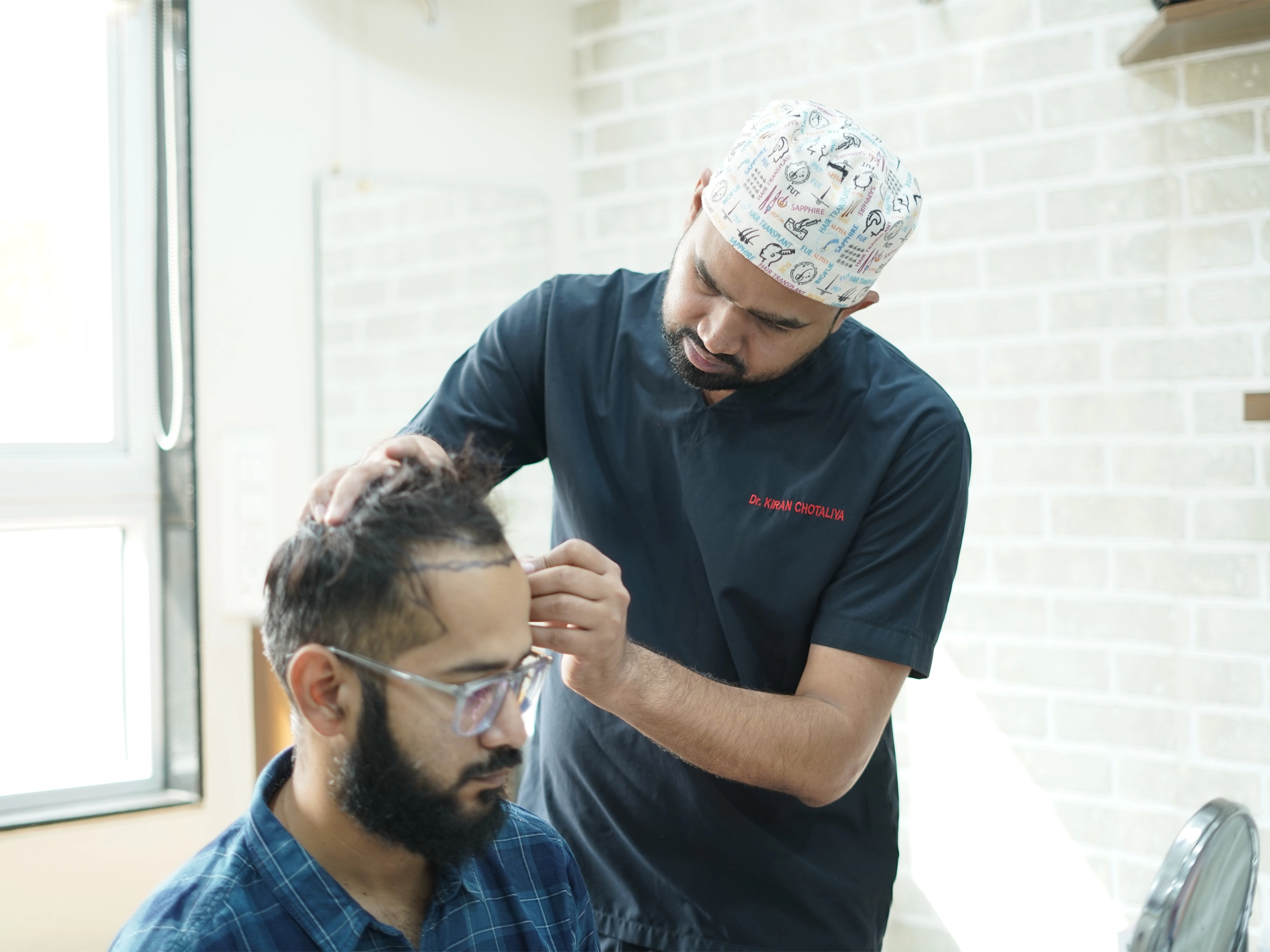
Natural and Permanent Results
Transplanted hair grows naturally and permanently. It match seamlessly with existing hair, providing a natural-looking hairline and an improved overall appearance.
Increased Self-Confidence
Restoring a fuller head of hair can significantly boost self-esteem and confidence, allowing individuals to feel more comfortable and satisfied with their appearance.
Low Maintenance
It’s important to note that transplanted hair does not require any special maintenance. It can be treated the same as natural hair, including washing, cutting, and styling. Additionally, some medications may be prescribed for maintenance purposes.
Long-term Cost-effectiveness
Hair transplant surgery may require a significant investment at the outset, but it can actually cost-effective option in the long run. Unlike temporary solutions such as wigs, patches, scalp micro pigmentation, or medications, hair transplants offer a permanent solution to hair loss. This means that you won’t need to worry about ongoing or regular expenses associated with other treatments.
“Artistic work done by a hair transplant surgeon is now widely available and easily accessible.”
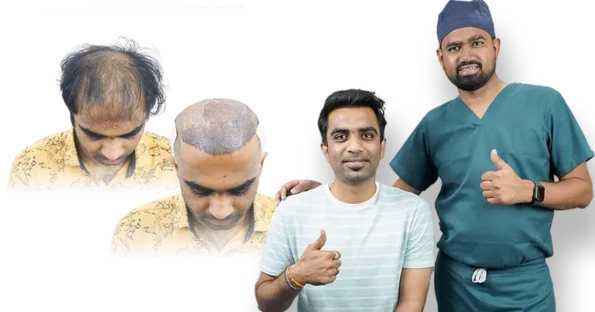
✅ Quick recovery
✅ Minimum pain during surgery
✅ Natural, dense results
✅ A more youthful look will boost your confidence
✅ Optimal for small corrections and more extensive procedures alike

Hair transplant surgery is a daycare procedure that does not require much preparation, but there are some important steps to take care of before going for it.
Please follow the instructions below before your surgery:
Healing & Recovery Time
Modern hair transplant techniques have significantly improved the recovery process, and you can expect a quick healing period.
After the surgery, you can resume your regular activities within a few days. The donor area heals completely within a week, while the recipient area recovers within 7 to 30 days with complete attachment of new hair grafts.
During the initial days of the hair transplant, you may experience some redness, itching, dryness, crusts, minor swelling, and a feeling of heaviness in your head. However, these symptoms are temporary and will subside soon.

As with any surgical procedure, hair transplant surgery carries potential risks and complications. However, hair restoration is a minimally invasive procedure.
Potential risks of the hair transplant method include
❌ Heaviness
❌ Minute Pain, bleeding or swelling
❌ Infection
❌ Follicle damage
❌ Numbness or feeling a tingling sensation
❌ Unnatural looking results
❌ A continuation of hair loss after the treatment
At our center most patients did not get any side effects or very rare as hair transplant surgery performed by a doctor
✅ It’s important to understand that the outcome of a hair transplant procedure may not meet all your expectations.
✅ While it can significantly improve your hair loss, it may not restore your hair to its exact pre-hair loss density or achieve your desired aesthetic in every case.
✅ This is especially true in severe hair loss conditions and poor donor sites, where hair coverage on the scalp is the primary goal.

Yes, many hair transplant clinics offer free consultations. These consultations allow you to discuss your hair loss concerns, evaluate your

Generally, no, hair transplants are not covered by insurance in India, especially for cosmetic purposes like male pattern baldness. Hair
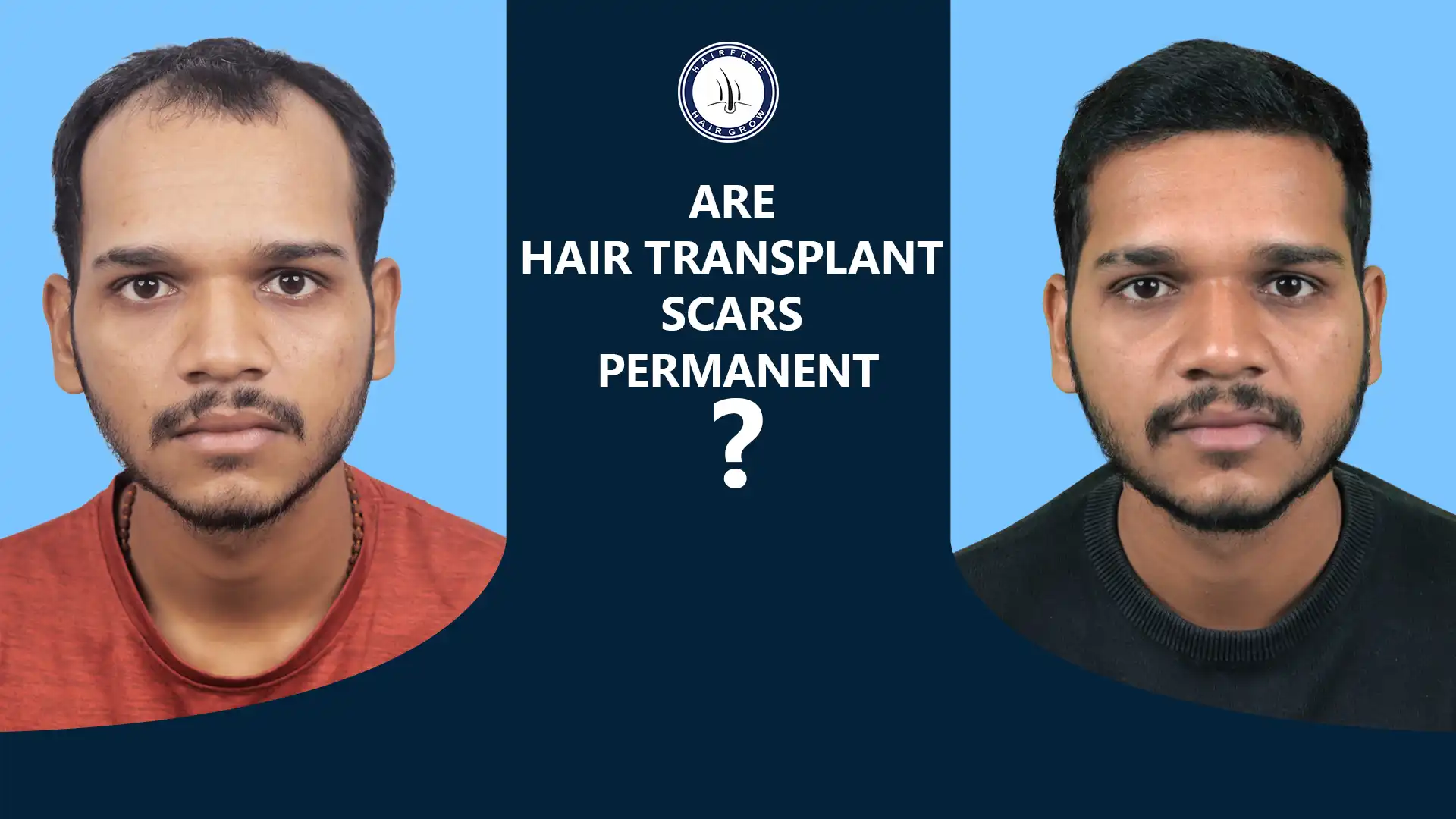
Yes, hair transplant scars are generally considered permanent, but their appearance can improve over time and be minimized with careful
Find Out in 3 Minutes, Your Hair Problem Solution.
A male hair transplant is a surgical procedure where hair follicles are extracted from a donor area (usually the back of the scalp) and implanted into balding or thinning areas. It is primarily used to treat male pattern baldness and offers natural-looking, long-lasting results by using your own hair follicles.
Hair transplants are generally permanent. The transplanted hair follicles, taken from the genetically resistant donor area, continue to grow for a lifetime. However, surrounding non-transplanted hair may still thin with age, so ongoing hair care or additional sessions might be needed to maintain uniform density.
In India, a male hair transplant typically costs between ₹30,000 and ₹1,00,000 or more, depending on the number of grafts, technique (FUE, FUT, DHI, etc.), surgeon’s expertise, and clinic location. Hairfree & Hairgrow Clinic offers affordable packages tailored to individual hair loss severity and goals.
Ideal candidates are men with stabilized hair loss, sufficient donor hair on the back or sides of the scalp, and good overall health. Men aged 25 or older with realistic expectations and a diagnosis of male pattern baldness respond best to the procedure and post-surgery outcomes.
Common techniques include FUE (Follicular Unit Extraction), FUT (Follicular Unit Transplantation), DHI (Direct Hair Implantation), BIO-FUE, and Stem Cell FUE. Each differs in graft extraction and implantation method, recovery time, and scarring. FUE and DHI are popular for natural results and faster healing.
The procedure usually takes between 4 to 8 hours, depending on the number of grafts being transplanted. In some cases, larger sessions may be split across two days. It is performed under local anesthesia, and patients can go home the same day after the surgery.
Yes, hair transplants offer a permanent solution since the transplanted follicles are resistant to DHT, the hormone responsible for hair loss. However, continued thinning in untreated areas may occur, so follow-up treatments, medications like minoxidil or finasteride, or touch-ups may be advised.
Initial healing takes 7–10 days. Patients may experience redness, mild swelling, or scabbing. Most return to work in 3–5 days. New hair growth begins after 3 months, with full results visible in 9–12 months. Proper scalp care and avoiding sun exposure help ensure optimal healing.
Visible hair growth typically begins around the third month post-transplant. By 6 months, noticeable improvement is seen, and full results are usually achieved within 9–12 months. This timeline may vary depending on the individual’s healing rate and the hair transplant technique used.
Hair transplants are generally safe, but minor risks include infection, bleeding, swelling, temporary numbness, or scarring. Rarely, patients experience poor graft survival or unnatural hair direction. Choosing an experienced clinic like Hairfree & Hairgrow helps reduce risks and ensures natural, lasting outcomes.